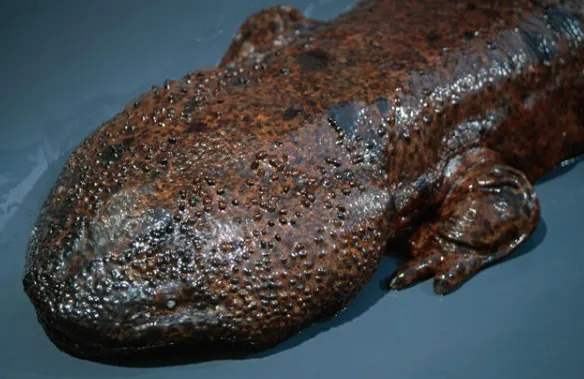
Table of Contents
Scientific Classification
- Kingdom: Animalia
- Phylum: Chordata
- Class: Amphibia
- Order: Urodela
- Family: Cryptobranchidae
- Genus: Andrias
- Species: Andrias japonicus
Quick Overview
The Japanese Giant Salamander (Andrias japonicus) is a remarkable and ancient amphibian species native to the cool, fast-flowing streams of Japan. As one of the largest salamanders globally, it holds cultural significance and captivates the interest of nature enthusiasts and researchers alike.
Fast Facts
- Scientific Name: Andrias japonicus
- Lifespan: Up to 80 years in captivity
- Average Length: 1.5 to 1.7 meters (5 to 5.6 feet)
- Diet: Carnivorous, preying on fish, insects, and crustaceans
- Habitat: Cold, clean streams in the Japanese mountainous regions
- Conservation Status: Near Threatened
Did you know?
The Japanese Giant Salamander is considered a living fossil, with its lineage dating back around 30 million years.
Appearance
The Japanese Giant Salamander has a robust and elongated body with loose, wrinkled skin. Its coloration ranges from dark brown to reddish-brown, providing effective camouflage in its stream habitats. The skin is slimy, and it features distinctive folds, giving the salamander a unique appearance.
Size and Weight
This species is among the largest salamanders globally, with adults reaching lengths of 1.5 to 1.7 meters. Exceptional individuals may weigh up to 25 kilograms. Males are typically larger than females.
Temperament and Behavior
Known for their nocturnal habits, Japanese Giant Salamanders are predominantly active during the night. They are primarily solitary, with males and females coming together during the breeding season. Their remarkable longevity contributes to a slow-paced lifestyle.
Fun Fact
Japanese Giant Salamanders communicate through a variety of vocalizations, including grunts, barks, and hisses, particularly during the breeding season.
Habitat and Distribution
Endemic to Japan, these salamanders inhabit cold, fast-flowing streams in mountainous regions. They are highly sensitive to water quality, emphasizing the importance of clean, well-oxygenated habitats.
Care Guide
Due to their specific habitat requirements and conservation status, Japanese Giant Salamanders are not recommended as pets. Preserving their natural habitats and promoting conservation efforts are crucial for their survival.

Diet and Nutrition
In the wild, Japanese Giant Salamanders feed on fish, insects, and crustaceans. In captivity, providing a diet that mimics their natural prey is essential for their health.
Health and Wellness
Conservation efforts focus on protecting their native habitats, preventing pollution in streams, and minimizing human disturbances. Captive breeding programs play a role in maintaining genetic diversity.
Reproduction
Breeding typically occurs in the fall, with females laying eggs in underwater burrows. The male guards the eggs until they hatch, and the larvae undergo a metamorphic process before becoming adults.
Conservation Status
The Japanese Giant Salamander is listed as Near Threatened due to habitat loss, water pollution, and potential disease threats. Conservation initiatives aim to protect their habitats and raise awareness about the importance of preserving this unique species.
Fun Fact
Japanese folklore often portrays the giant salamander as a mythical creature with supernatural powers, adding cultural significance to its existence.
Photo Gallery
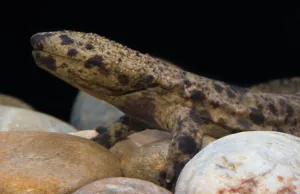
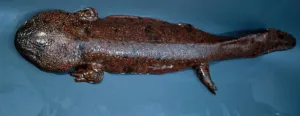
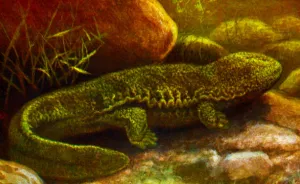
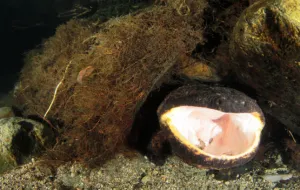
Related Profiles
Share This Profile
Fun Fact
With a lifespan of up to 80 years in captivity, these salamanders are among the longest-living amphibians.
- Enchi Ball Python: A Unique and Stunning Morph of Python regius - March 27, 2025
- Emerald Tree Monitor: The Enigmatic Green Guardian of the Rainforest - March 26, 2025
- The Egyptian Cobra (Naja haje): A Fascinating Serpent - March 25, 2025
